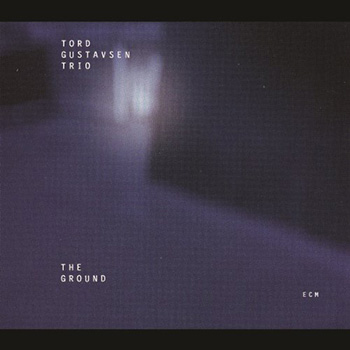 The Ground - Tord Gustavsen Trio (Import)
The Ground - Tord Gustavsen Trio (Import)
The Tord Gustavsen Trio consists of Tord Gustavsen on piano, Harald Johnsen on double bass, Jarle Vespestad on drums.
The signature line of Monty Python, my all time favourite among TV shows, is "and now here is something completely different". And thus it happens to be so for this Ground-breaking and unique Jazz album.
This is jazz in an almost Vilambit mode of exposition in the style of Hindustani Classical. The unhurried note-by-note elaboration and vistaar of unfolding melodies (yes, this is Jazz at its most melodious). There is one more striking resemblance here at work - the way the Mukhda of the melody is arrived at (on the Sam) after a few rhythmic cycles of innovative exploration of the melody.
And nowhere is this more obvious than in the very first track Tears Transforming. It is a piece that begins slowly and meditatively, with the piano first, and then the bass and drums softly rolling in to perform their dance of a splendid interplay of melody and rhythm.
There are two distinguishing features of almost all the tracks, firstly they are built on melodies that are steady, but played out on bass and rhythm lines that keep shifting, sometimes subtly, and sometimes not so subtly and secondly the bass and drums are not relegated to the background to be the steady foundation for the melodies. They are active participants and in equal measure to the piano - in creating the music.
The next track Being There is a more straight forward medium tempo theme which works within a conventional pop-like tune format and the only one with a steady bass and rhythm line.
The third, Twins, is sheer delight, a stylised exposition and an object lesson in how a melody can be played out in shifting rhythms be they defined by the delicate cymbal and high-hat play and rim hits and brushes, or syncopated plucking of the bass.
Yes, it is exceptionally difficult to figure out the deeper meaning of the themes of instrumental music, in the absence of lyrics, and especially so when the booklet accompanying the album does not allude to them at all. Perhaps, it is intended that way, actively inviting the listener in participating in the journey and realising his or her own meanings from the titles of the themes and their sequence and the story they convey via the wordless music itself.
And the next few themes reveal the story. Curtains of Mercy, Sentiment, Kneeling Down, Reach Out and Touch It, Edges of Happiness, Token of Tango, seem to describe the universal journey of mankind into spirituality, beginning with grief, tears, asking for forgiveness, thanking the divine, prayer, feeling the divine, the joy of experiencing the divine.
And then, finally, seemingly reminding us, that our journey of life and its deeper meaning, within the context of our experiences and sentiments, though universal, also has a deeply private and personal touch, that keeps us rooted to the Ground which is our home for the life we experienced. And in the happy realisation that it will continue to be home for our bodies when our life is extinguished. And that, aptly and significantly, happens to be the final track, The Ground. The longest of them all, clocking in at just over 7 minutes and the most intricately composed of them all.
All tracks reflect the genius of the composer, Tord Gustavsen, and seem to be completely in the spirit of what Neil Diamond expressed in the song Be from the movie Jonathan Livingston Seagull.
Be As a page that aches for a word Which speaks on a theme that is timeless And the one God will make for your day Sing As a song in search of a voice that is silent
This is jazz in a Lucknowi andaaz of Pehle Aap no instrument wants to take the center-stage, yet each urges the other to do so and in this non-egoist play, the ethereal music emerges. There are solos but none of them are overpowering or virtuoso pieces, no heavy-handed drumming, and no kicking bass. It is as if the instruments are stars, twinkling here and there, against the vast background of darkness and silence and empty space. And it is this silence that is the backbone on which the melodic garland is woven. As Miles Davis once said “Music is the Space between Notes”.
It is completely Norwegian. Aha Norway. there lies a clue or two. It is deeply chilled, and deeply spaced out, deeply meditative, and deeply remote. It is also sublimely beautiful a deep, and stark, and icy beauty which is spiritually ethereal. And this is what the music brings forth.
This is not jazz for the sake of a show of pompous and vainglorious virtuosity. It is jazz in meditation. This just might be Norway's most well-kept secret.
The audio quality of the recording by ECM does full and complete justice to all the poems in spirituality on this CD.
Highly recommended.
Rating: *****
Label: ECM, 2004.
Duration: 60 minutes
Rajendra (Raj) Chittar is based in Bengaluru. He is a retired theoretical Computer Scientist/Software professional. He now luxuriates in his modest but slowly growing collection of Hindustani & Western Classical, Jazz, Classic Rock, Bollywood (pre-1980) music and his books on Mathematics and Physics.
He can be contacted via email rajendra.chittar@gmail.com or on cell +91-8105977500.
He can be contacted via email rajendra.chittar@gmail.com or on cell (+91-8105977500).
